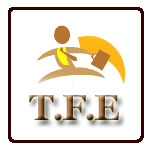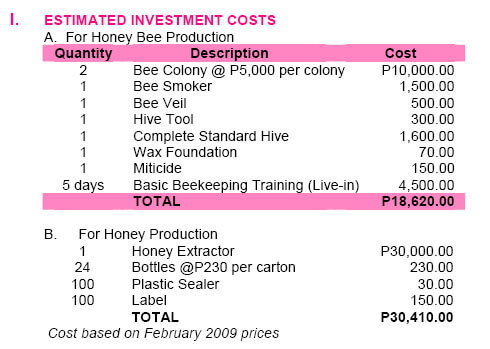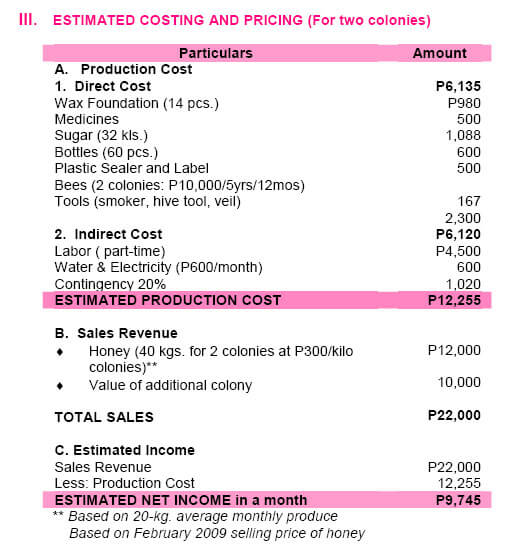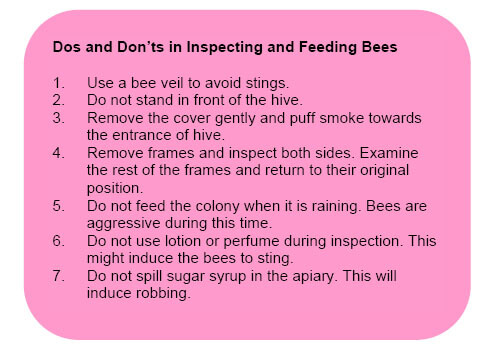Beekeeping is a business opportunity with social, economic, and ecological benefits that requires minimal time, labor, and resources. There are four species of honeybee that thrive best in the Philippines:
1. Apis mellifera also called European honeybees
2. Apis cerana also locally called laywan
3. Apis dorsata commonly called pukyutan
4. Apis melliponinea or stingless bees
The sunflower is the source of nectar, which is essential in beekeeping, particularly in producing quality and premium honey. Some of the forest tree species, which are good sources of pollen and nectars for the bees are narra, calliandra, eucalyptus, oak tree, molave, kamachili, kakawate, duhat, rain tree, african tulip, jacaranda, ipil-ipil, and other forest trees.
Cereal crops like corn and plants such as banana, mango, coconut, coffee, cacao, citrus, peanut, mongo, tomato, and eggplant are favorites of honeybees.
II. PROCEDURE A. Selecting an apiary* and obtaining bee colonies
1. Look for an apiary, taking into consideration the following requirements: must be near an access road to facilitate transportation of the products; must be free from polluted water and high pesticidal sprays; must have enough windbreaks (trees and shrubs) for protection during the typhoon season because bees tend to swarm in high wind; must have an abundant number of pollen and nectar producing plants within 3 km.- 8 km. radius.
2. Buy bee colonies from existing beekeepers.
3. Ensure that the nucleus colony is composed of the laying queen, several adult workers, and worker brood in all stages of development.
4. Construct a good quality beehive – a box that houses the bees and consists of frames, top cover, hive body, division board, and bottom board.
———————-
* Apiary- a place where bees are raised for their honey
B. Managing the colonies
1. Feed the bees when there is scarcity of nectar and pollen.
2. Prepare for honey flow. Add empty frames with wax foundation sheets to existing frames in the colony when there is no space left for the queen to lay eggs. The number of frames to be added is determined by the laying capacity of the queen. A colony ready for honey flow must have nine to ten frames with bees to maximize availability of nectar.
3. Place the empty frames side by side with the emerging brood. Do not treat the bee colonies with miticides one month prior to honey flow. The treatment of mites, foulbrood, and other pests and diseases must be done two months before honey flow. Undertake biological treatment with tobacco and alagaw in cases of mite infestation.
C. Harvesting and packaging honey
1. Open the hive. Blow smoke towards the bees to avoid stinging and swarming.
2. Select ripened honey frames or sealed honey frames from the colony.
3. Take, shake, and brush the filled frame off the bees.
4. Uncap the sealed honey with a sharp knife, fork, or uncapping spoon.
5. Put the uncapped honey frames in the centrifugal honey extractor. Extract the honey by rotating the handle of the extractor. Using a pail, collect the honey coming out of the faucet at the side of the extractor.
6. Strain using a sterilized mesh or moist cloth.
7. Sterilize the bottles by boiling for 30 minutes.
8. Transfer the honey in the sterilized bottles, seal with a plastic sealer, and label for marketing.
Ecological Implications
Beekeeping helps improve ecological balance by promoting plant regeneration and species diversity through pollination.
————————
Tips:
1) Do not start a beekeeping project with incomplete beekeeping equipment and with less than two colonies.
2) Do not starve and overcrowd the colony as this will induce swarming.
Source: DENR 1997, “Sustainable Livelihood Options for the Philippines, Upland Ecosystem: An Information Kitâ€.
IV. REGISTRATION REQUIREMENTS
1. Business Name Registration
Department of Trade and Industry (DTI)
Provincial Office where the business is located
Validity: 5 years
2. Mayor’s Permit/Residence Certificate and
Sanitary Permit
Municipality or city where the business is located
Validity: 1 year
V. BEES AND EQUIPMENT SUPPLIER
1. Dr. Cleofas Cervancia
Institute of Biological Sciences
UPLB College, Laguna
Tel No.: (049) 536.2893
2. Mr. Ramon “Tobee†Tamayo
49 First Road, Quezon Hill, Baguio City
Tel. No.: (074) 442.6732
VI. FINANCING
Philippine Council for Industry and Energy Research and Development
Department of Science and Technology (DOST) Bicutan, Taguig
Tel. Nos.: 837.2926 / 837.2935
www.pcierd.dost.gov.ph
VII. TECHNICAL ASSISTANCE
1. Technology Resource Center (TRC)
Telephone nos.: Direct lines (632) 822-9712, (632) 822-5087 trunkline: (632) 822-5418 locals 201/203/204
TRAINING VENUE: 2/F Jacinta II Bldg., EDSA Guadalupe, Makati City (beside MMDA)
www.trc.dost.gov.ph
2. Office of the Provincial Agriculturist
Ms. Imelda Sannadan
Office of Provincial Government of La Union
Tel. No.: (072) 888.3184
3. Don Mariano Marcos Memorial State University
Dr. Apolonio Sito
Director, National Apiculture Research &
Technology Institute
Bacnotan, La Union
Tel. No.: (072) 242.5641 loc. 267







Where i can find a bee and equipment supplier here in pangasinan?
We are moving to Banga Akland soon and I was wondering if you know of anybody that has bee keeping supply’s around there Thank you